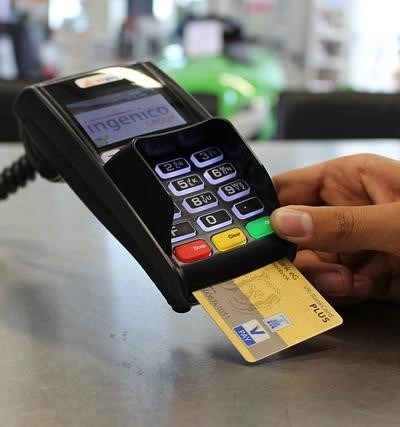Let’s delve into the fascinating intersection of Social Security Number (SSN) security and blockchain technology. As a cybersecurity professional, I’ve witnessed firsthand the devastating impact of identity theft and data breaches. The vulnerability of SSNs is a significant concern, and blockchain offers a potentially transformative solution. However, it’s crucial to approach this with a nuanced understanding, acknowledging both the promise and the pitfalls.
Understanding the Threat Landscape
The current system for managing SSNs is inherently vulnerable. Centralized databases, while seemingly efficient, become prime targets for cybercriminals. Data breaches are alarmingly common, leading to widespread identity theft and significant financial losses for individuals. The consequences of SSN compromise can be catastrophic, impacting credit scores, financial accounts, and even medical records. Effective SSN protection is paramount.
Blockchain: A Potential Game Changer
Blockchain technology, with its distributed ledger technology (DLT) and data encryption capabilities, presents a compelling alternative. Imagine a system where SSNs are not stored in a single, vulnerable database, but rather distributed across a secure network. This inherent decentralization makes it exponentially harder for hackers to access and exploit the data. Decentralized systems offer a significant advantage in mitigating the risks associated with data breaches.
Key Benefits of Blockchain for SSN Security
- Enhanced Data Privacy: Blockchain’s cryptographic mechanisms provide strong data privacy, protecting SSNs from unauthorized access.
- Improved Data Integrity: The immutable nature of blockchain ensures the integrity of SSN records, preventing tampering or alteration.
- Increased Transparency (with appropriate access controls): While maintaining privacy, blockchain can enhance transparency in authorized data access and usage.
- Strengthened Fraud Prevention: The inherent security of blockchain can significantly improve fraud prevention measures related to SSN usage.
Addressing the Challenges
While promising, the integration of blockchain for SSN security isn’t without its hurdles. Blockchain vulnerabilities do exist, though they are constantly being addressed through research and development. Scalability remains a concern for large-scale SSN management. Moreover, the development of robust, user-friendly interfaces for interacting with blockchain-based systems is crucial for widespread adoption.
The Role of Digital Identity
The concept of digital identity is intrinsically linked to this discussion. Blockchain can play a key role in creating secure and verifiable digital identities, eliminating the need for reliance on vulnerable centralized systems for SSN verification. This transition requires careful consideration of information security best practices and robust secure storage solutions.
The application of blockchain technology to SSN security represents a significant advancement in the fight against identity theft and data breaches. While challenges remain, the potential benefits are substantial. By leveraging the strengths of blockchain while mitigating its weaknesses, we can pave the way for a more secure future, where individuals’ sensitive information is protected from the ever-evolving threats of the digital age. Careful consideration of cryptocurrency and its potential role in secure transactions related to digital identities is also warranted. Remember, continuous learning and adaptation are key to navigating this evolving landscape.
Moving Beyond the Fundamentals: Practical Implementation and Future Considerations
Now that we’ve established the theoretical benefits of applying blockchain technology to Social Security Number (SSN) security, let’s delve into the practical aspects. Remember, theoretical elegance is only as good as its real-world implementation. We need to consider several key areas for successful deployment.
1. Choosing the Right Blockchain:
Not all blockchains are created equal. When considering a platform for SSN management, factors like transaction speed, scalability, and security protocols are paramount. Permissioned blockchains, offering greater control and privacy, are generally preferred over public blockchains for sensitive data like SSNs. Thorough due diligence is crucial; explore the existing literature on blockchain vulnerabilities specific to the chosen platform. Don’t be swayed by marketing hype; focus on verifiable security audits and proven track records.
2. Integrating with Existing Systems:
The integration of a blockchain-based system with legacy systems presents a significant challenge. Careful planning and phased implementation are essential to minimize disruption and ensure data integrity throughout the migration process. This involves robust APIs and secure data migration strategies, minimizing the risk of data breaches during the transition. Consider the implications for both information security and data privacy at each stage.
3. Addressing Data Privacy Concerns:
While blockchain enhances data privacy, it’s not a silver bullet. Zero-knowledge proofs and other cryptographic techniques can further enhance privacy, allowing verification of SSN authenticity without revealing the actual number. Furthermore, stringent access control mechanisms are vital, ensuring only authorized personnel can access and utilize the data. Remember, robust data privacy measures are not merely a compliance issue; they’re fundamental to maintaining public trust and ensuring the ethical use of this powerful technology.
4. The Role of Cryptocurrency and Secure Storage:
While not directly storing the SSN on the blockchain, cryptocurrency can play a crucial role in secure transactions related to identity verification. Smart contracts could automate processes, ensuring that only authorized entities can access SSN-related information. However, the security of the chosen cryptocurrency and its associated wallets is paramount. Secure storage solutions, including hardware security modules (HSMs), are essential for protecting private keys and preventing unauthorized access. Always remember best practices for secure storage of sensitive cryptographic information.
5. Mitigating Blockchain Vulnerabilities:
No technology is foolproof. Blockchain systems, while generally secure, are not immune to vulnerabilities. Staying abreast of the latest research on blockchain vulnerabilities is critical. Regular security audits, penetration testing, and proactive patching are essential to maintain the integrity and security of the system. Remember, continuous improvement and adaptation are crucial in the ever-evolving landscape of cybersecurity.
6. The Human Element:
Finally, let’s not forget the human element. Strong password policies, multi-factor authentication, and employee training programs are vital complements to any technological solution. Even the most robust system can be compromised by human error or social engineering. A comprehensive approach that incorporates both technological and human safeguards is essential for achieving truly effective SSN protection and fraud prevention.
Implementing blockchain for SSN security is a complex undertaking, requiring careful planning, robust technology, and a deep understanding of cybersecurity best practices. By addressing these challenges proactively, we can harness the power of distributed ledger technology and data encryption to create a more secure and private future for managing sensitive personal data. Remember, your role as a cybersecurity professional is not just about implementing technology, but about fostering a culture of security and responsibility.

